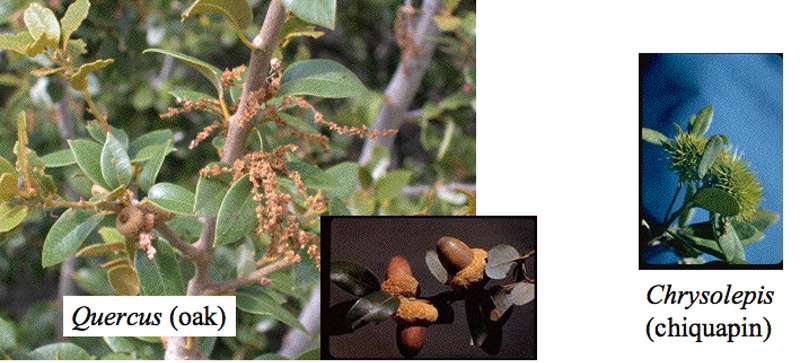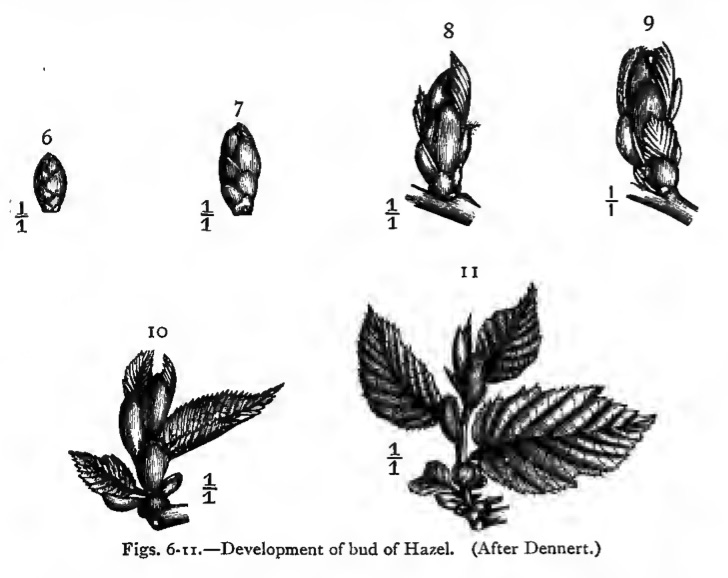
Families of common chaparral shrubs
This lesson covers four families of plants. These families have very different characteristics. Many of the dominant shrubs of chaparral are included in these families. The families you will learn here are:
The Rosaceae (the rose family)
The Rhamnaceae (the buckthorn family)
The Ericaceae (the heath family)
The Fagaceae (the oak family)
When keying out species in these families (and others), you may be asked if the plant is evergreen or deciduous. You do not need to watch the plant all year to see if it drops its leaves. You can look at a branch to see if the leaves are ONLY on the current year's growth (suggesting that all leaves were dropped before the beginning of the current growing season) or if leaves are still attached to older parts of the stem (parts that grew last year or the year before). If they are still attached to last year's growth, the plant has had leaves on it all year, and is evergreen.
To determine when different parts of a branch were produced, look for bud scales or bud-scale scars. Bud scales are small, scale-like leaves that cover and protect the apical meristem during harsh periods when the branch is not growing. Bud scales may be produced to cover the apical meristem at the tip of a branch (forming a terminal bud). They will also protect non-growing apical meristems in the axils of leaves, forming axillary buds. The image below shows an axillary bud beginning growth in the spring and producing a new branch.

Note that the bud scales are crowded. They are modified leaves, and the internodes between them are very short. Therefore, when they fall off, they leave scars that are much closer together than the scars of ordinary leaves; they form what looks like a ring of bud-scale scars. Identifying rings of bud-scale scars will tell you where growth stopped after one growing season and began again during the following growing season.
Below are illustrations of dormant twigs (from Gray 1887). Obviously, these species are deciduous: they have dropped all of their foliage leaves.
Check your understanding:
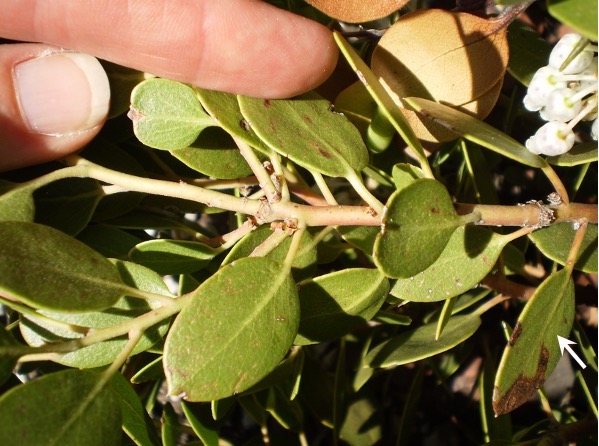

The Rosaceae is the rose family. Plants of the Rosaceae have...
The ovary can be superior or inferior, and different species produce different types of fruits. Many of our domesticated fruit crops (apples, pears, peaches, plums, apricots, cherries, strawberries, blackberries, raspberries, etc.) are in this family.
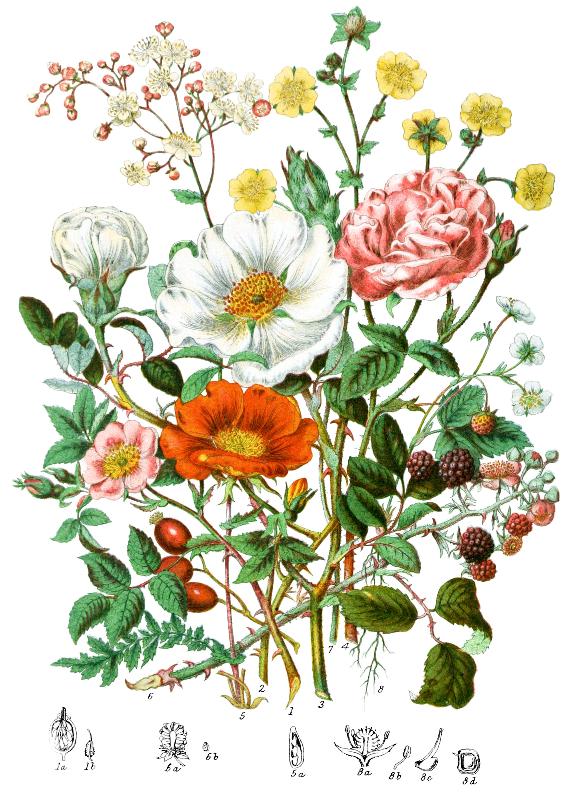
The flower below shows typical characteristics of the Rosaceae: five petals, 5 sepals, and many stamens attached to the lip of a hypanthium.
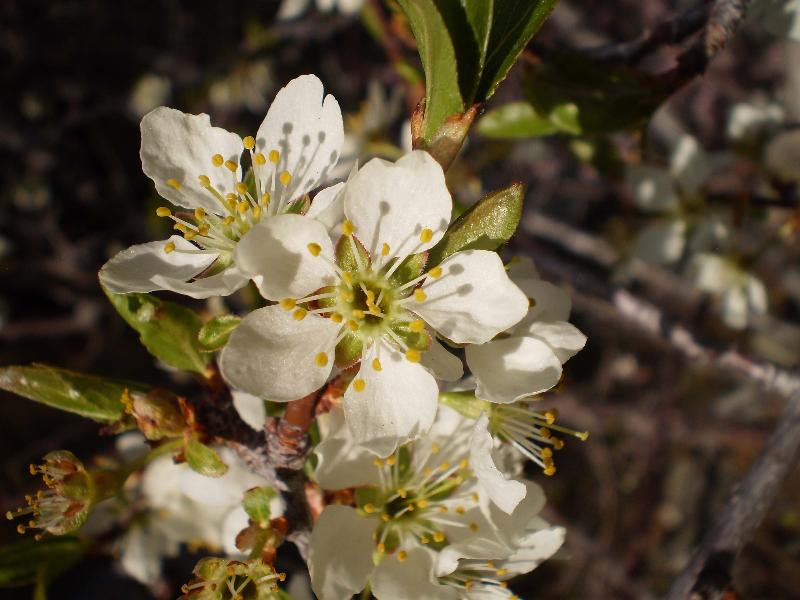
Species of the Rosaceae may have inferior ovaries or superior ovaries, and they may have one pistil or multiple pistils.
The flowers below are all from species in the Rosaceae.
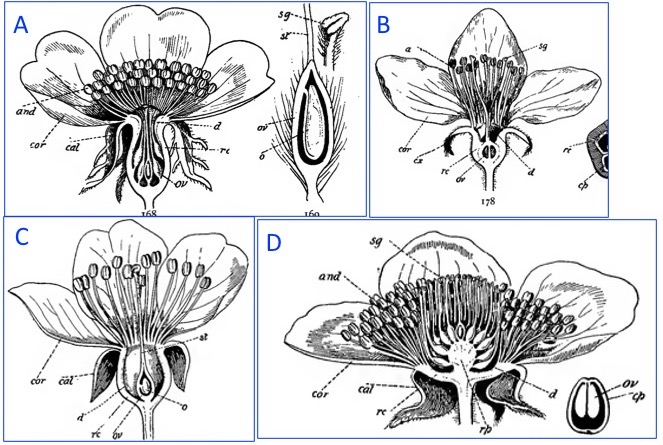
Check your understanding:
In working through the key to plants in the Rosaceae, you will probably be asked about the shape of the hypanthium. Is it cup-shaped or is it obconic (like an inverted cone) or funnel-like?
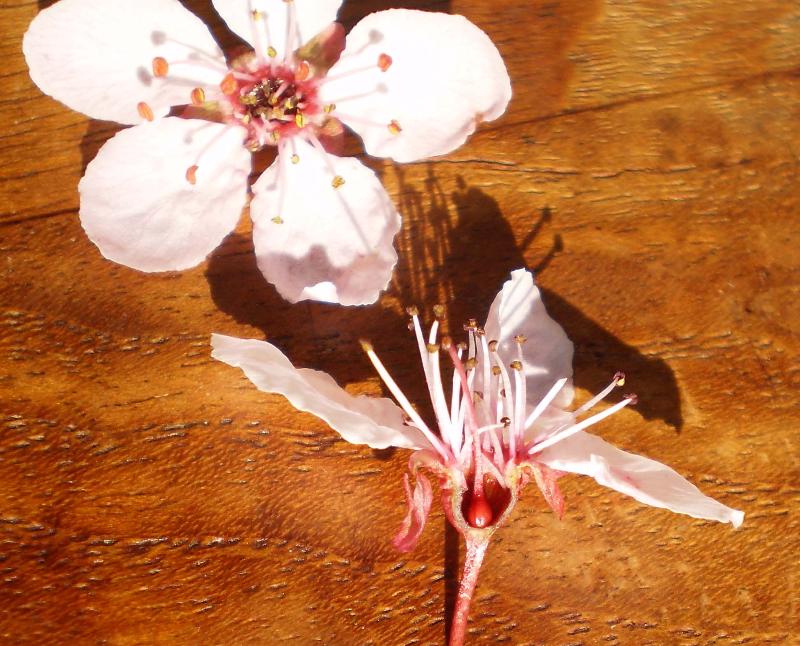
Flowers of the Rhamnaceae, like the Rosaceae, also have hypanthia. The hypanthium in the flower of the Rhamnaceae is generally much smaller than you find in the Rosaceae. The most obvious difference between flowers of the Rhamnaceae and flowers of the Rosaceae is in the number and placement of the stamens.
Flowers of the Rhamnaceae have...
Having "stamens that are opposite the petals" means that the stamens are on top of the petals or that the stamens and petals are pointing the same direction. This is not the usual arrangement in flowers. In most flowers, stamens are alternate with petals, meaning that their points of attachment are between the petals. The diagram below illustrates this difference:
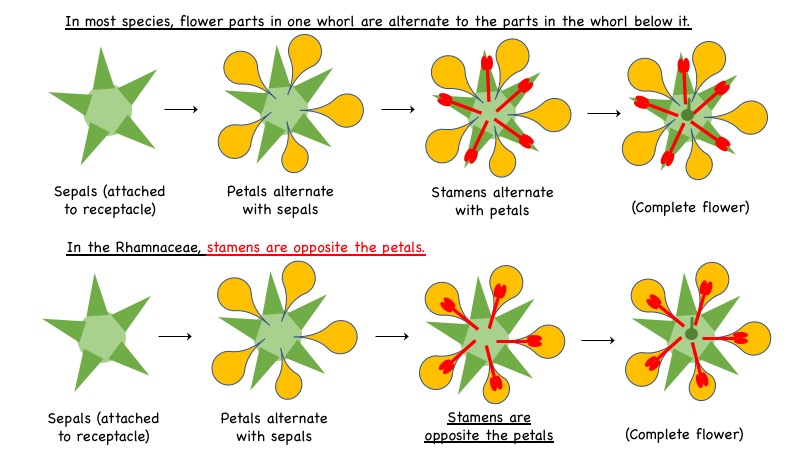
Below are photos of two members of the Rhamnaceae. One has petals, and one does not. Where there are petals, the stamens are lying right on top of the petals, pointing the same direction. Where there are NO petals, the stamens alternate with the sepals. This puts them opposite ... where the petals ought to be, if this thing had petals.
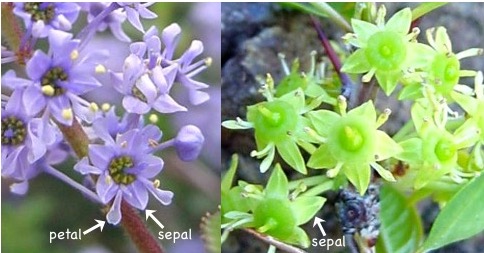
Sometimes the sepals curl inward, as in the Ceanothus species below.
Check your understanding:
The Ericaceae is often called the heath family. It includes manzanita species of chaparral (genus: Arctostaphylos). However, it also includes heath, blueberries, cranberries (that grow in acidic bogs around the northern hemisphere) and numerous other species.
Plants of the Ericaceae are somewhat variable. The vast majority, however, have urn-shaped (urceolate) corollas that are fairly distinctive. The plants of the Ericaceae that you will be responsible for recognizing have...
Flowers are often white or pink:


The genus, Arctostaphylos, is particularly diverse in California. The common name for the genus is manzanita. Many of its species have smooth red bark. Approximately half of its species can resprout from an underground root crown or burl after fire, but other species of Arctostaphylos cannot resprout and die in fires.

The Fagaceae is the oak or hickory family. California has many oak species, and we call it the oak family here. Scrub oaks are common components of chaparral. Taller oak species are dominants of various types of woodlands throughout the state.
In the Fagaceae...
In oaks (the genus, Quercus) the fruit is a single nut, commonly called an acorn. Its subtending involcre is the acorn cap.
In the chinquapins (the genus, Chrysolepis), there may be up to 3 nuts in a cluster that is enclosed by spiny, bur-like involucre
